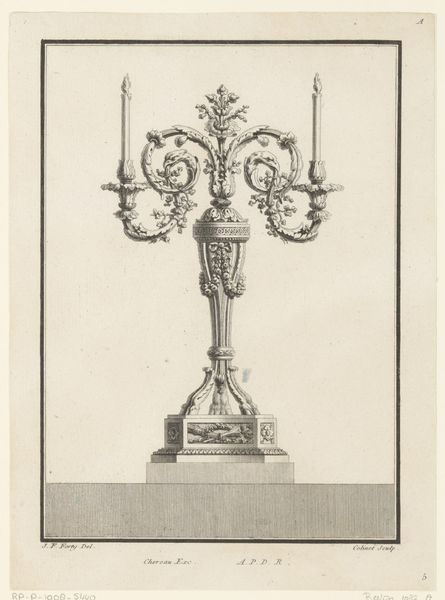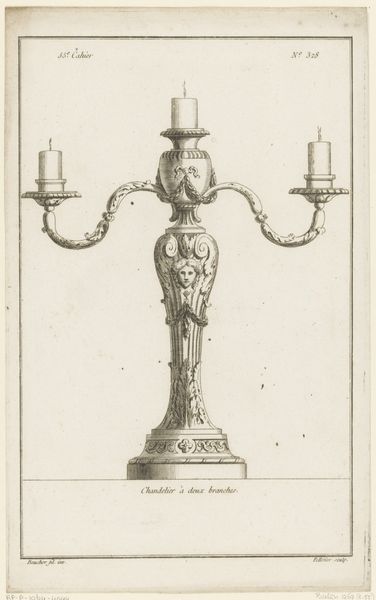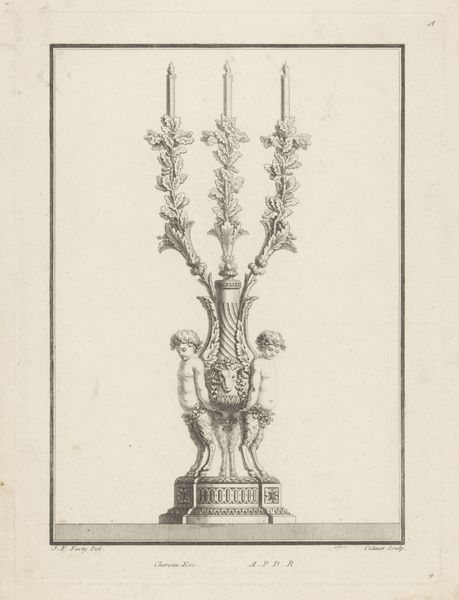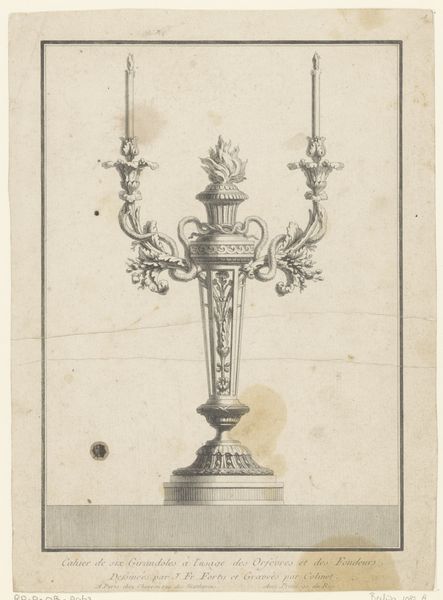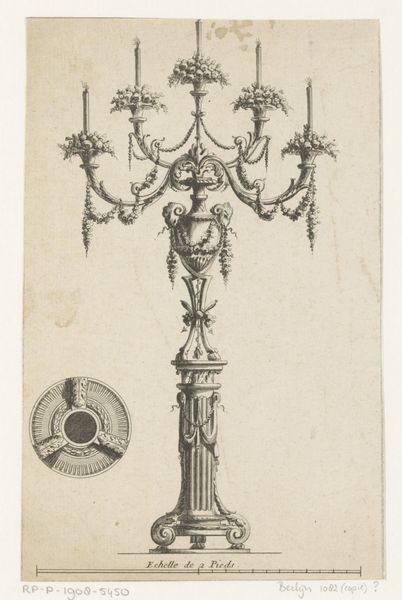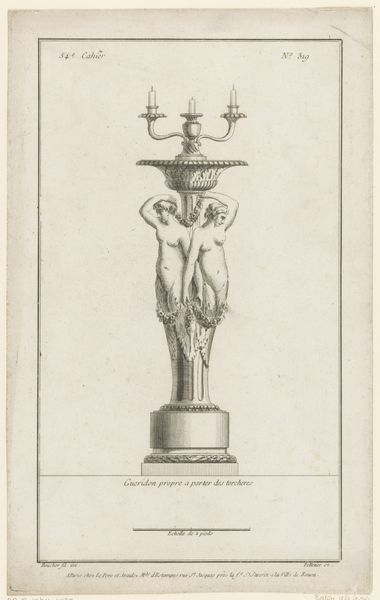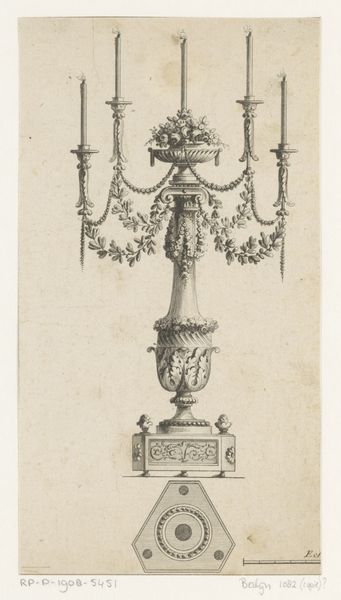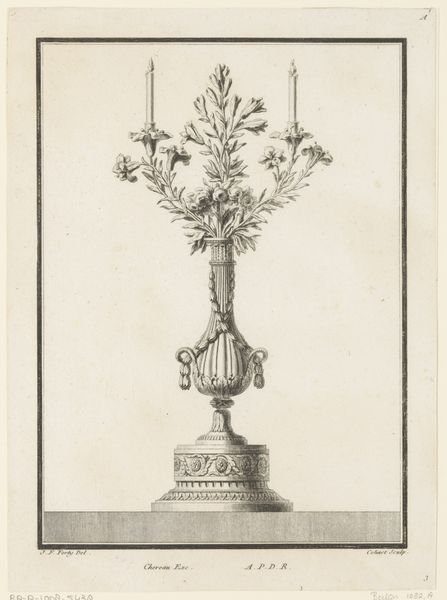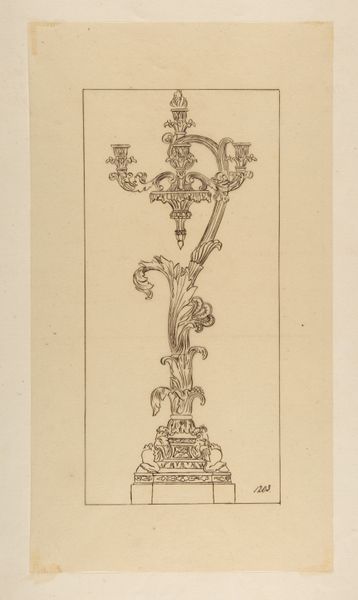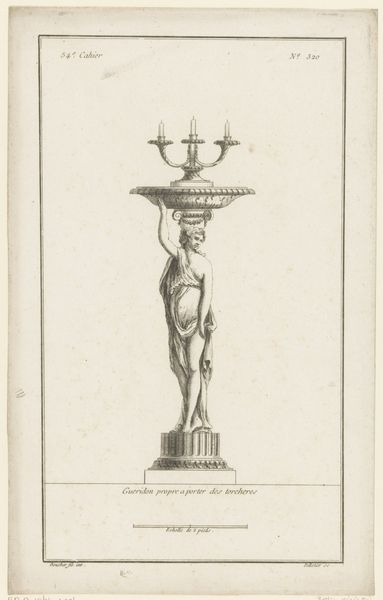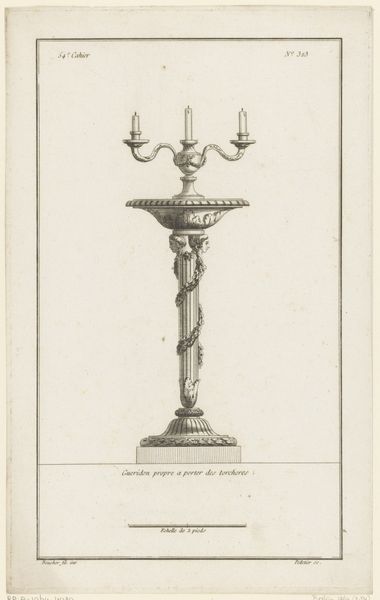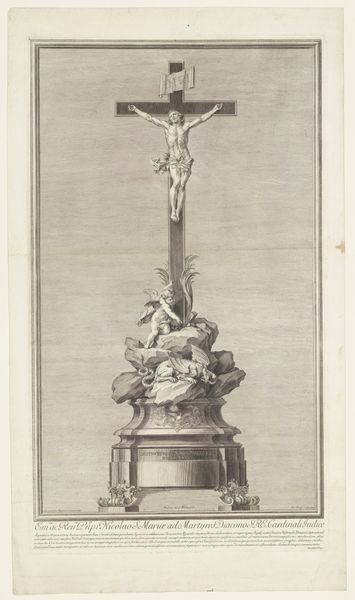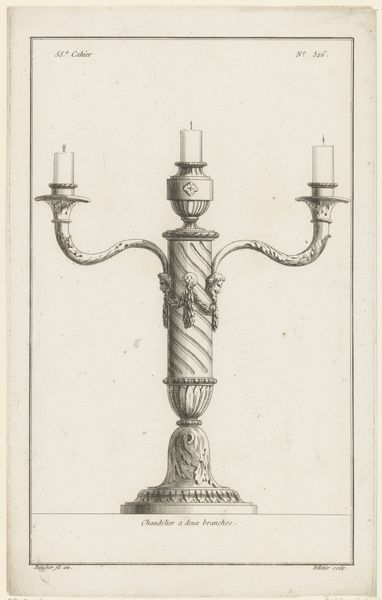
print, sculpture, engraving
#
neoclacissism
# print
#
figuration
#
form
#
sculpture
#
line
#
history-painting
#
nude
#
engraving
Dimensions: height 264 mm, width 195 mm
Copyright: Rijks Museum: Open Domain
Editor: Here we have “Girandole met staande vrouw,” or Girandole with a Standing Woman, dating from around 1775 to 1790, by A. Colinet. It's an engraving. I'm struck by how this design blends the human form with the functional object – the woman seems to be effortlessly supporting the candelabra. What can you tell me about this merging of art and utility? Art Historian: It’s fascinating, isn’t it? The period saw an increased interest in integrating classical forms into everyday objects, a hallmark of Neoclassicism. We see a renewed interest in Greece and Rome; ideals like civic virtue, order, and reason found their way into art and even influenced interior design. Can you spot any other clues that confirm this artwork as Neoclassical? Editor: Well, the woman's drapery looks similar to Roman sculptures. And the rigid symmetry and those clean lines of the candelabra itself. It feels very ordered and restrained. Art Historian: Precisely. Artists used historical imagery and form to engage the public. Imagine this candelabra placed within a home, subtly projecting ideas about taste, wealth, and civic ideals to visitors. Do you think art like this influenced how people behaved, their social interactions, and self-perception? Editor: That's an interesting thought. Maybe owning objects with such refined design inspired a sense of elegance and order in social behavior. So, it’s not just a candlestick; it’s a statement? Art Historian: Absolutely. The political environment would play a part. Art can influence or change its meaning as it passes through time, influenced by political instability, consumer desires and economic strength of the period. An object like this might speak to one generation, but may become obsolete through the forces of revolution. Editor: That’s given me a new appreciation for looking beyond just the aesthetics and considering art's role in culture. Thanks for sharing your insights! Art Historian: My pleasure! Considering the social context transforms our experience of even seemingly simple designs. It allows us to imagine the life the art led at its inception, and the effect the same artwork could have when experienced by a future generation.
Comments
No comments
Be the first to comment and join the conversation on the ultimate creative platform.
